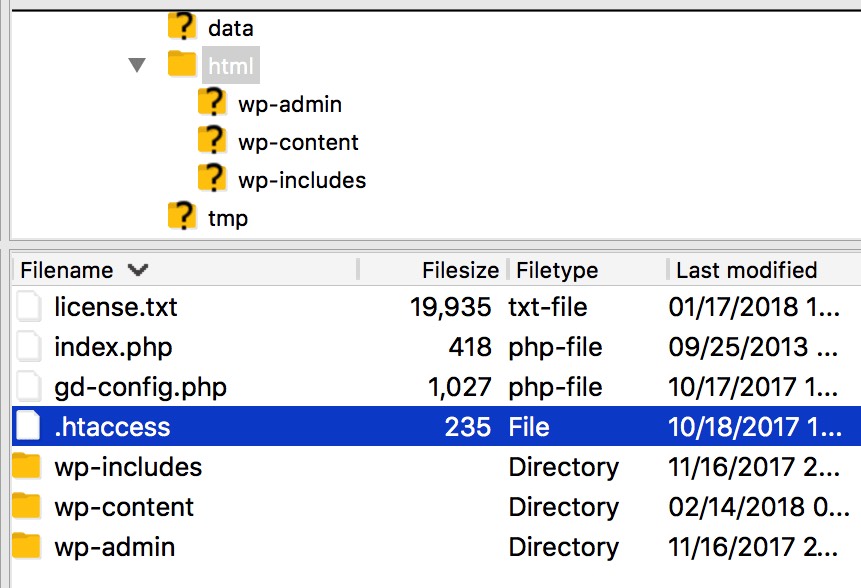

htaccess file is actually a file that is used by Apache web servers. htaccess file is not technically a WordPress file. Let’s get the basics out of the way first. Finally, we’ll show you why you might want to do that. Then, we’ll explain how you can access it, and how you can edit it. htaccess file does in the standard WordPress setup. htaccess file, but without explaining much about why the file is there in the first place, and how you can use it. In both of these guides, we accessed and edited the. We’ve previously covered some of them, including a process for making regex redirects in WordPress, and a more general overview on header redirects for WordPress. htaccess file can be used to achieve a number of useful things, though. This file is a core file that your site relies on, and is mainly concerned with how the s of your website work. There comes a time in any website owner’s life, however, when you will need to go beyond this functionality. You can achieve much, in terms of customizing the way that your site feels and functions, by simply using the tools that WordPress has made available to you as standard. RewriteCond %)/(?.WordPress is a great platform that is made all the better by how detailed and powerful the standard WordPress dashboard is. Consider leveraging stronger firewall solutions for easier and automated blocking. This directive can quickly grow too large to realistically maintain. If a user with a listed IP address attempts to connect to the site, the request fails and no further directives are evaluated. Replace the addresses in the example with the appropriate address numbers or ranges. Specific addresses or ranges can be blocked by adjusting the RewriteCond lines. If you monitor the server log files for any period of time, you will find certain IP addresses are constantly scanning for vulnerabilities. Known IP addresses of spammers or other bad actors are blocked from accessing the site in the following directive. Bad actors attempt to exploit vulnerabilities in the server configuration by sending crafted requests or malformed request methods. By leaving unused request methods open, it increases the attack surface and exposes the site to potential attacks. If the site is using other methods, then adjust the list accordingly. ServerSignature Off Limit Allowed HTTP Request MethodsĪllowed request methods are limited to POST, GET, HEAD, and OPTIONS. If a bad actor is scanning for a version of Apache with a known vulnerability, this makes it slightly more difficult to fingerprint.

The next directive instructs Apache to not display its version information on server generated error pages, listings, etc. This limits exposure of the underlying file system structure and content. If a user attempts to browse a directory, Apache won’t serve a listing of all subdirectories or files at that location. The first directive in the file disables directory listings. Remember, defense in depth, so combine these methods with others to create a balance of security and usability. If you have a large userbase of early generation browsers, then please adjust accordingly. It also assumes the typical user with a modern browser. The following examples and suggestions assume a single WordPress installation in the document root (not installed in a sub-directory). Other directives are also included below to reduce bandwidth consumption and improve site performance through HTTP compression and browser caching. Many of the below suggestions are not specific to WordPress so they may be used to increase the security posture of any site served by Apache. htaccess to further secure and harden WordPress from common attacks. Additional directives may be included in. htaccess file created by WordPress during the installation process on Apache contains only the basic directives needed for WordPress to function.


 0 kommentar(er)
0 kommentar(er)
